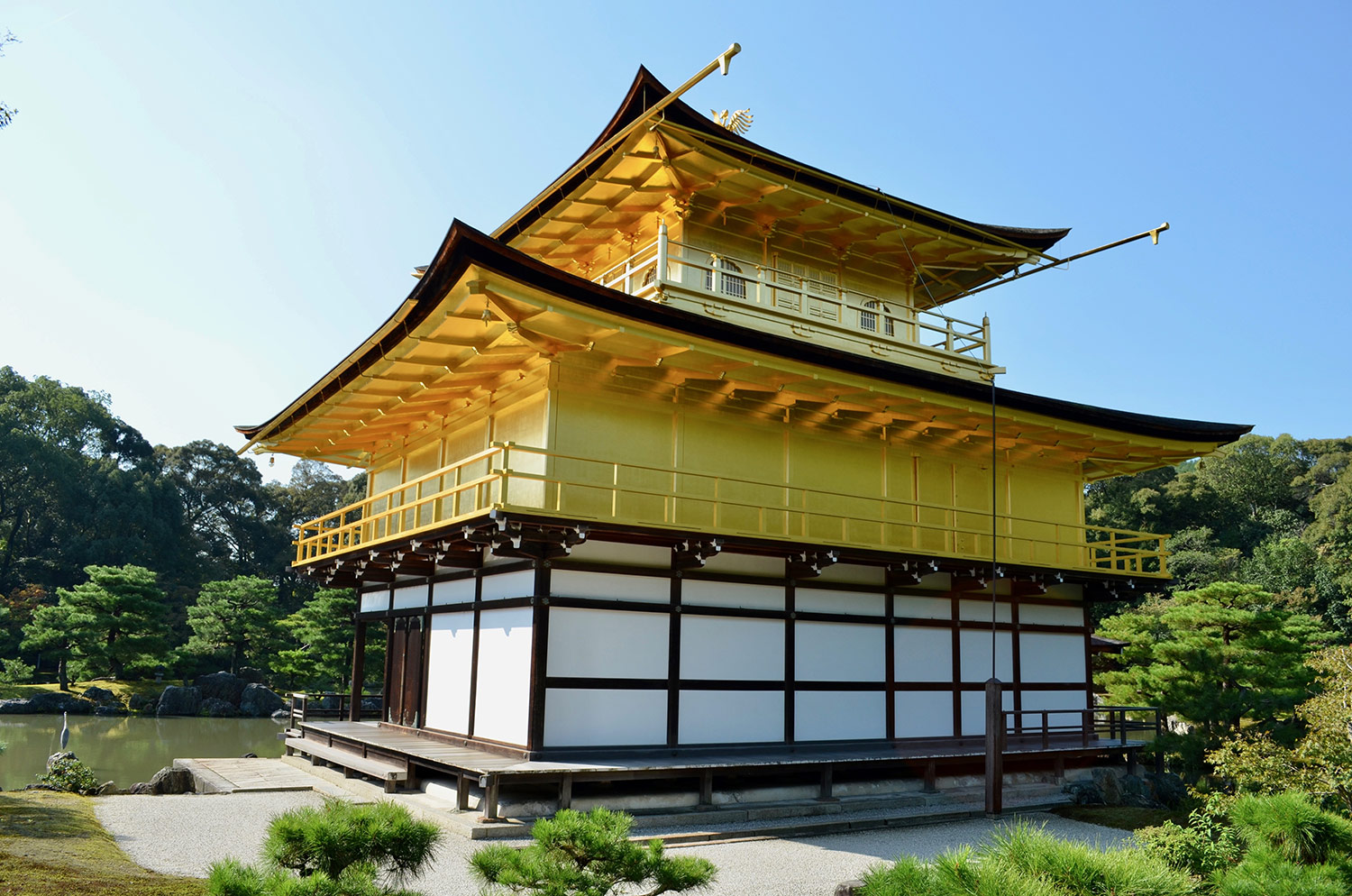

KINKAKU-JI GOLDEN PAVILION AND GINKAKU-JI SILVER PAVILION IN KYOTO
Kyoto
Kyoto is the second – after Nara – historical capital of Japan. Even though the city is much more developed and modern than its older sister, it has remained faithful to tradition and is still permeated with the spirit of ancient Japan. Kyoto is situated in a valley among hills. Once built on the hillsides to protect the city against evil spirits, the temples enchant the tourists craving for Oriental culture. In the hope of meeting a mysterious geisha, crowds of visitors also flood Gion – the most famous and the oldest entertainment district of Kyoto. However, the Japanese beauties that used to stroll down the atmospheric streets of Gion can now only be seen in premium tea houses and restaurants. Their company can be enjoyed exclusively by selected, wealthy enough and recommended clients.
The attractions of Kyoto
Kyoto’s most important attractions include Kinkaku-ji and Ginkaku-ji – tied together through the history of the Ashikaga shogun family. Both temples are surrounded by incredible vegetation that emphasises their fable-like look. However, Japanese gardens are so crowded that their paths can only be followed in a strictly defined way, and visitors can basically forget about peaceful contemplation of the exquisite beauty of the landscape. Still, despite the crowds of tourists that make a tour of Kyoto much harder, everyone who has visited the historical capital will confirm that even the most beautiful photograph cannot convey the incredible magic and replace the view of the golden façade of Kinkaku-ji shimmering in the sun.
Kinkaku-ji temple
The history of Kinkaku-ji dates back to 1397. Shogun Yoshimitsu commenced the construction of the Golden Pavilion as his retirement mansion, which was to be transformed into a Zen temple after his death. Initially, the two-storey building served residential purposes, and the section devoted to deities occupied only the top floor. Every level has a different function and is charactered by a different architectural style. The ground floor, which served as the chambers of the patriarch of the Ashikaga family, resembles a samurai mansion. The first floor – in the palace style – had mostly representative functions and it was where guests were received. It was the section of sophisticated receptions and elite meetings devoted to music and poetry. The last storey, inspired by the Chinese style, was a private chapel of the devout shogun. But what makes the structure truly unique is its original façade, with two levels completely covered with flakes of pure gold. Kinkaku-ji was destroyed by fires during war fights on numerous occasions but the Japanese each time managed to rebuild the precious temple. The last time the Golden Pavilion burst into flames was in 1950, when it was set on fire by a sick fanatical monk. In its current shape, the building was erected in 1955, and its walls were again covered with gold in late 1980s.
Ginkaku-ji temple
The Ginkaku-ji Silver Pavilion, the other symbol of Kyoto, was built by another member of the Ashikaga family. Just like his grandfather Yoshimitsu, Yoshimasa erected the monumental structure to create a comfortable mansion where he could spend his retirement. Finished in 1482, the dwelling was based on the Golden Pavilion but it seems much more modest and – contrary to appearances and the original plans – it is not covered with silver. Some sources say that this is because of the premature death of Yoshimasa, who did not get to finish his work. Others mention a less glorious reason why the building does not have a precious coating – finance. Ginkaku-ji was built according to the Shoin-Zukuri style. The ground floor is typically Japanese while the upper floor – functioning as a home chapel – is visibly influenced by Chinese architecture.
The unique majesty of Kinkaku-ji and Ginkaku-ji is emphasised by mysterious, impeccably maintained gardens. Running to the Pavilions are stone paths that wind among the trees and go over small wooden bridges, and the exquisite façades of buildings are reflected in the smooth table of the surrounding ponds. The enchanting surroundings are a great reason to make sure that your Kyoto tour includes both the Golden Pavilion shimmering in the sun and the more modest mansion of Yoshimasa, which is a great starting point for the breathtaking 2 km long Philosopher’s Walk – preferably to be taken in spring, when Japanese cherry trees are in bloom.























